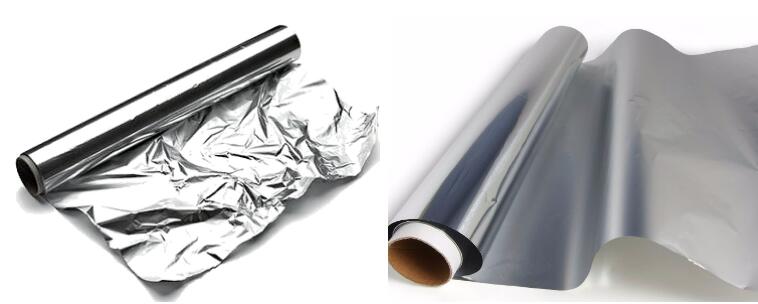Thin aluminum foil gauges down to 6μm (0.24 mil) are also commonly used.Standard household foil is typically 0.016 mm (0.63 mil) thick and heavy duty household foil is typically 0.024 mm (0.94 mil).
It has unique mechanical properties as it is formable, strong and can be ‘dead folded’, which is beneficial when aluminum foil wrapping food;
Product feature of thin aluminium foil:
1. Good deep drawing property
2. Good yielding property
3. High cupping value
What is the production of aluminium foil?

Aluminium foil can be produced through he « DC Process » or the « CC Process », both process able, with current technology and equipments, to produce good quality of thin aluminium foil. For the DC Process, the aluminium foil is produced by first rolling heated aluminium ingots (hot rolling) down to coils with gauuge of 2 to 4 mm, and then cold rolled by several passes to the required foil gauge. For the CC Process the molten metal is converted directly (continuous casting) into a coil with a gauge of 5-6 mm, which will be cold rolled to the finish requested gauge.
When the foil has reached the final gauge, the coils are slitted to final widths and coils size, before to be annealed in special furnace. For many applications, the annealing of the foil is a critical step, in order to remove all organic wastes and be absolutely clean for food contact, and to get the final mechanical properties for optimized running.
Aluminum foil supplanted tin foil in the mid 20th century.Because of Thin foils are fragile and are sometimes laminated to other materials such as plastics or paper to make them more useful.
We offer various specification and different aluminum foil to meet your requirements.More requirements, please Email :sarah@aluminium24.eu to us